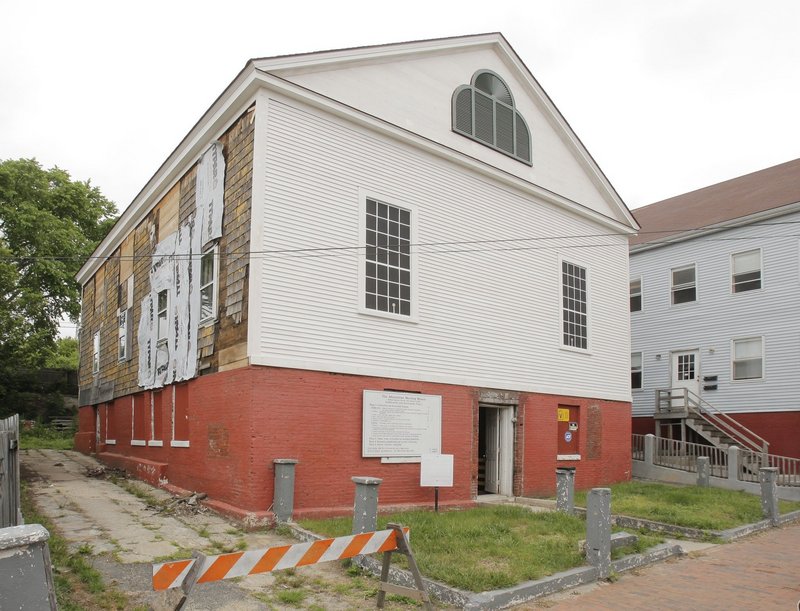The Abyssinian Meeting House in Portland isn’t an ornate building, either inside or out. The simple wood-framed structure is solidly built but has no flashy or fancy elements to catch the eye of passers-by.
But to anyone versed in its history, the building is stunning.
The Abyssinian is the third-oldest African American meeting house in the country, its pulpit occupied by such abolitionist luminaries as William Lloyd Garrison and Frederick Douglass. It’s the only building in Maine officially recognized as part of the Underground Railroad. It’s one of the few structures in Portland to have survived the Great Fire of 1866.
Despite the Abyssinian’s historical significance, though, its future is seriously in question. This week, the National Trust for Historic Preservation named the house of worship to its 2013 list of 11 most endangered historic places, sites that are at risk of being destroyed or falling into disrepair.
This designation, although distressing, ultimately could benefit not just the Abyssinian restoration effort but also the community at large.
The national attention could bring the organizers of the project the additional money and volunteers needed to see it through. The restored building will tell a story that too few people know — that of Maine’s deep-rooted black community and its role in national events — and help make it clear that people don’t have to be rich or well-connected to make history.
Maine has a reputation as one of the least diverse states in the nation, but Maine’s biggest city has had a black community since Maine was still part of Massachusetts. The first to arrive were slaves, freed when Massachusetts outlawed slavery in 1783. Others were mariners who came here on their own.
The Abyssinian dates to 1832, its construction spearheaded by six black men who said in an open letter that members of their community didn’t feel welcome in the city’s white congregations and needed a place of their own. It thrived throughout the 19th century as a place of worship, an abolitionist lecture hall, a school and one of the northernmost stops on the Underground Railroad.
An 1898 shipwreck, however, took the lives of 19 Abyssinian congregants — a quarter of the congregation — and the church closed in 1917. The building was sold and converted into tenement apartments, then eventually taken for back taxes.
In 1998, the Committee to Restore the Abyssinian bought the structure from the city for a small fee, and the organization has been at work ever since. They’ve raised $1 million, largely in grants, for archaeologists, carpenters and historians to address structural problems and undo destructive renovations. But this stalwart group of volunteers needs another $3 million to turn the building into a museum and learning center and to maintain it over the long term.
Though relatively plain compared to other historic properties in Portland, the Abyssinian is as valuable historically as the most ornate mansion. In fact, it may be more so, since it offers clues to the daily lives of ordinary working people — longshoremen, merchants, seamstresses, domestic servants — whose stories are not often told in conventional history books.
The Abyssinian Meeting House has been saved before. During the Great Fire, a black firefighter kept it from burning by covering the church’s wooden roof with blankets soaked in water from the building’s basement spring. Now the National Trust for Historic Preservation has raised the alarm again, and those of us in Portland and across Maine must offer our money, our time or both to rejuvenate the Abyssinian project if we don’t want disrepair to do to this historic site what the Great Fire could not.
Send questions/comments to the editors.



Success. Please wait for the page to reload. If the page does not reload within 5 seconds, please refresh the page.
Enter your email and password to access comments.
Hi, to comment on stories you must . This profile is in addition to your subscription and website login.
Already have a commenting profile? .
Invalid username/password.
Please check your email to confirm and complete your registration.
Only subscribers are eligible to post comments. Please subscribe or login first for digital access. Here’s why.
Use the form below to reset your password. When you've submitted your account email, we will send an email with a reset code.